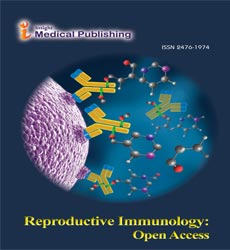Abstract
Prediction of Preterm Delivery at Symptomatic and Asymptomatic Women
Preterm delivery is the leading cause of neonatal mortality and morbidity in the world. Its worldwide incidence ranges from around 5%-15%, depending on the population. The worldwide rates of preterm birth have increased in the past couple of decades in spite of the efforts to alleviate the problems associated with preterm delivery and the medical advances made. Preterm deliveries and associated complications account for over 75% of the neonatal mortality rates and for around half of the neurological sequalle in newborn children. Consequently, women presenting with threatened preterm labor are often treated with hospitalization and the administration of tocolytics to avoid preterm delivery. Randomized studies on the use of tocolytics in threatened preterm labor have demonstrated a significant prolongation of pregnancy by about 7 days but no significant reduction in the incidence of preterm delivery, perinatal morbidity or mortality. In order to contribute to the efforts for prediction of preterm delivery, we conducted a prospective cohort study at the Clinic for Gynecology and Obstetrics, Skopje. Patients were eligible to join this prospective cohort study if they attended the University Clinic for Gynecology and Obstetrics, Skopje and were admitted to Department of High Risk Pregnancy Unit with symptoms of preterm labor (symptoms of uterine activity, three regular uterine contractions in 10 minutes).The aim of this study was to determine the relationship between sonographic cervical length, fetal Fibronectin (fFN), phIGFBP-1 (Actim partus test), cytokines (IL-6,IL-2R and TNF-alpha) and spontaneous preterm birth(SPTB) up to 14 days from sampling. In this study was include symptomatic and asymptomatic patient at 24.0 to 36.6 gestation weeks. The studied biochemical markers in our study were only moderately successful in the prediction of preterm delivery. The best predictor model in our study was the combination of the fFN test, Actim partus test, concentration of IL-6 in the cervical fluid, the cervical length <21.5 mm, concentration of CRP and IL-6 in the serum. Our study is only the beginning of this type of research in our population. Further research is required in terms of the evaluation of cost-benefit of using such test to prevent subsequent unnecessary interventions in the low-risk group, as well as achieve the benefits from such intervention in the high-risk groups of patients.
Author(s):
Marija Hadzi Lega
Abstract | PDF
Share this

Google scholar citation report
Citations : 237
Reproductive Immunology: Open Access received 237 citations as per google scholar report
Abstracted/Indexed in
- Google Scholar
- Sherpa Romeo
- China National Knowledge Infrastructure (CNKI)
- Secret Search Engine Labs
Open Access Journals
- Aquaculture & Veterinary Science
- Chemistry & Chemical Sciences
- Clinical Sciences
- Engineering
- General Science
- Genetics & Molecular Biology
- Health Care & Nursing
- Immunology & Microbiology
- Materials Science
- Mathematics & Physics
- Medical Sciences
- Neurology & Psychiatry
- Oncology & Cancer Science
- Pharmaceutical Sciences

